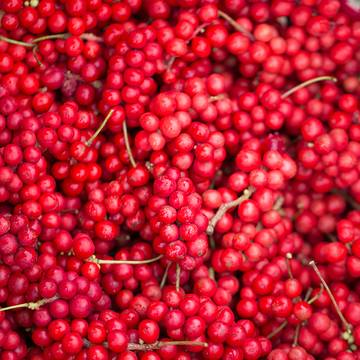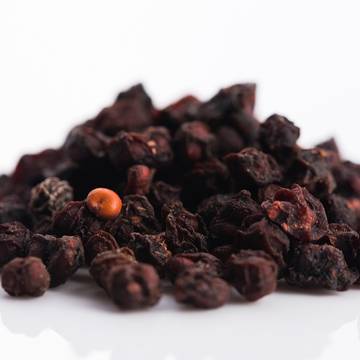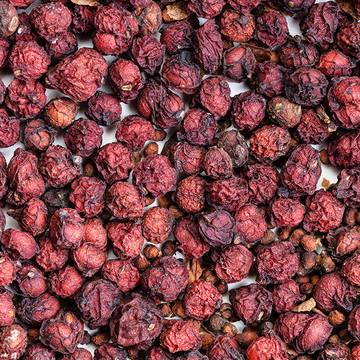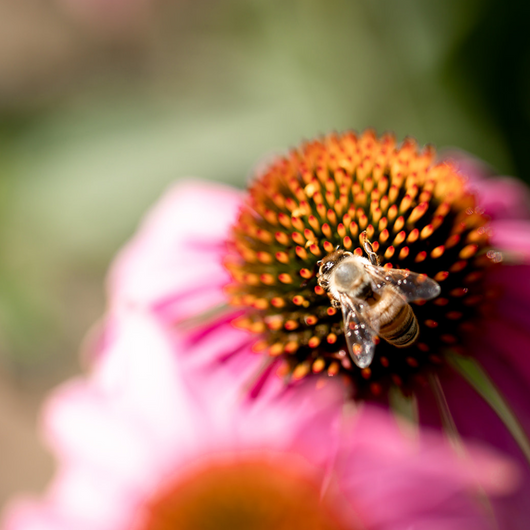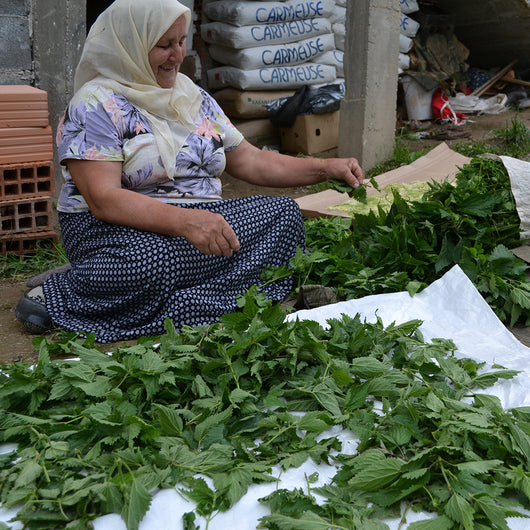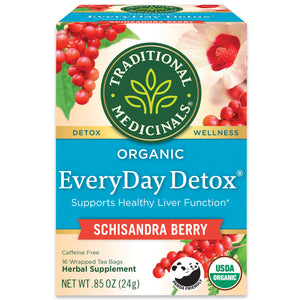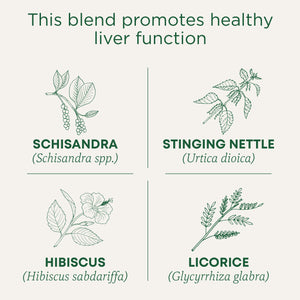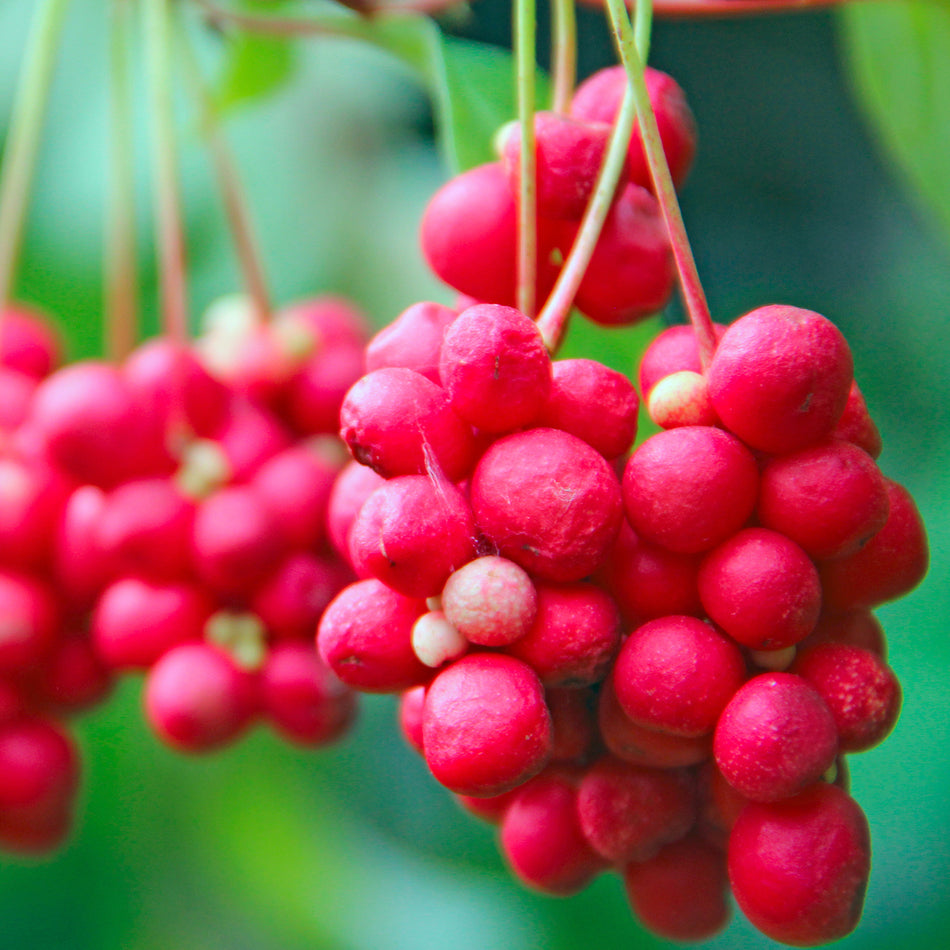
Schisandra Berry
Schisandra chinensisTraditionally used to support a variety of organs, schisandra is an adaptogenic super fruit used to support overall stamina and vitality.*
Experience the benefits of this “five flavor fruit.”
What are the Benefits of Schisandra?
Nothing quite compares to the complex flavor of schisandra berry. Commonly referred to as the “five flavor fruit,” schisandra berries have been used in Traditional Chinese Medicine (TCM) for over 2,000 years.
Research shows that schizandrol A & B, and schisandrin A, the primary lignans found in schisandra berry support healthy liver function.* In both Eastern and Western herbalism, schisandra berry is considered an adaptogenic superfruit, traditionally used to support overall stamina and vitality.* The powerful complex of organic acids, vitamins, and lignans contained within the berry make schisandra a good choice for offsetting occasional stressors, supporting liver health, and promoting overall vitality.*
Another name for this medicinal berry is wǔ wèi zi, or “five flavor fruit.” Appropriately named, as according to TCM theory it’s the only fruit to contain all five tastes—bitter, pungent, salty, sour, and sweet. According to that branch of herbal medicine, this unique composition supports the liver, kidneys, heart, lungs, and spleen, which are known as the 5 zang organs.* Collectively these organs are known as having yin qualities and produce and store qi, the vital life-force that makes up all living things.
Folklore & Historical Use of Schisandra
While it may seem unusual to folks here in the States, rest assured, this traditional herbal medicine is far from being a fad. These lignan-rich berries have been used in traditional Chinese medicine (TCM) for over 2 centuries. The first recorded use of schisandra can be traced to the earliest text of herbal medicine in China, the Divine Husbandman’s Classic of the Materia Medica, believed to date back to the first century BC. There, it was revered as a superior herbal medicine which was said to “prolong the years of life without aging.” While that is a mighty claim, it is a testament to the respect and value placed upon this petite berry.
Understanding the benefits of these gleaming red jewels, local inhabitants of schisandra-rich forests would wait in anticipation of their ripening season. Once the dangling clusters of berries turned red, they were harvested, macerated in alcohol for medicinal consumption, brewed into tea, made into juices, jams, and soups, and dried for later use, much like is done today.
Since the 1950s, research in the former Soviet Union has explored its potential as an herbal adaptogen and its effects in increasing stamina, endurance and mental performance.* As a result, schisandra is well integrated in herbal practicum throughout Russia.
Botanical Description & Habitat
There are 22 species of schisandra, all of which are native to China and the Russian Far East. In China, Schisandra berry hails from wild, lush, and mountainous regions. The woody vines of schisandra prefer to grow in mountain thickets and along river banksriverbanks, spiraling through mid-level and tall canopy trees, making it a challenging berry to collect.
Prior to the Panda-Friendly standards which we helped to develop, collection practices were not uniform and many wild collectors relied on fast harvesting methods that threatened plant regeneration, and thus a crucial food source and habitat for many forest inhabitants, as well as a viable economic resource for local communities. Today, our wild collectors responsibly harvest just the ripe berries from the lower two-thirds of the vine, leaving the rest to share with the forest and fauna.
By using sustainably-harvested schisandra berry, we’re supporting ancestral plant medicine practices, traditional wild collection, rich ecosystems, and—pandas!
When To Use Schisandra Berry
After the drinks have flowed and for regular liver support
The Business of Sustainable Plants
Our business is rooted in plants, and for us, it’s a business imperative that we care for the ecosystems where these plants live and thrive. We believe that everything is interconnected, which means supporting ecosystems and the farmers and collectors who harvest and gather our herbs. Finding opportunities to reduce or eliminate emissions at the source, we support organic and regenerative farming practices as well as voluntary certifications like Organic and FairWild. These ensure the absence of pesticides, herbicides, as well as the ongoing sustainability of wild collection, and the health and livelihoods of the collectors who forage. Josef Brinckmann, Traditional Medicinals’ Research Fellow, Medicinal Plants and Botanical Supply, asserts, “Everyone has a role to play in preserving biological diversity. One way of doing that is by equitably supporting the local people to serve as stewards of the land.”
It Starts with Organic
We choose to source organic because we believe in the positive impacts it has on environmental sustainability, biodiversity, and overall ecosystem health. Organic helps us increase transparency while prioritizing consumer well-being and farmer success, which is key to producing the high-quality herbs we source. In 2021, we procured 2.73 million pounds of certified organic herbs, over 99.7% of our total botanical herbs purchased. Volumes were down slightly from FY20 due to timing of inventories received.
The impact from organic farming creates a vital ecosystem through improved soil health, water quality, pollinator habitats, and biodiversity. Organic farms also have increased carbon sequestration potential through long-term carbon storage in the soil, helping to mitigate climate change.
One of the benefits of organic that we most value is farmer health. We care deeply about the people who produce our herbs, ensuring that they are not exposed to synthetic chemicals found in conventional agriculture.
Fair Trade
We believe that everyone deserves a fair wage for hard work. That’s one of the reasons why we’re committed to fair trade. Traditional Medicinals® is a registered Fair Trade “brand holder”, “licensee” and “manufacturer,” and our products are certified by Fair Trade USA, an independent third-party certifier. We were an early adopter of Fair Trade, having launched our first fair trade tea product in 1998, just one year after Fairtrade International (FLO) was established. We continue to work closely with our network of producers to help them to implement fair trade standards and get certified.
EveryDay Detox® Schisandra Berry Tea
Additional Information
Important Precautions:
Consult your healthcare practitioner prior to use of you are taking prescription drugs. Caution with pregnancy. May increase stomach acidity, caution for those with gastric acidity or peptic ulcers.
Legal Disclaimer:
The information and other content in this article is designed to provide a general overview of the botany, cultural history, and traditional uses of this herb. It is not intended and should not be construed as health advice. Every person is unique and you should consult with your health care provider before using any herbal product or supplement.

